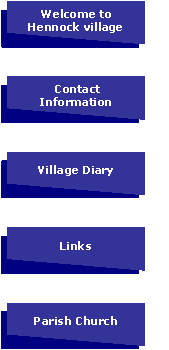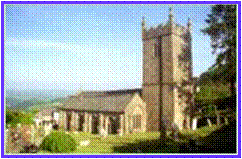There has probably been a Church on this site for over a thousand years. The old name of the village was Hainoc. It is mentioned in the Domesday Book.
The first Saxon Church was most likely of oak timber. The present font, which is of late Norman work about 1170, no doubt belonged to this earlier Church.
The tower may be dated about 1250, and the rest of the Church, including the screens and ceilure (decorated ceiling over the rood screen) about 1450.
The following features are noteworthy:
The GRANITE PIERS are monoliths.
The ROOD SCREEN was partially restored by Herbert Read Ltd. of Exeter in 1956. The rood (crucifix) and figures of our Lady and St. John were restored to the screen at this time. The paintings on the panels of the screen are original and were restored by Miss Anna Hulbert 1977-83 with the help of grants from the Council of Care for Churches.
The CEILURE is one of the finest in .the country. It was completely dismantled and restored by Herbert Read & Co. in 1975.
The stained glass window in the north aisle depicting angels is fifteenth century. The stained glass window in the south aisle chapel is nineteenth century.
A coloured plaque on the west wall commemorates the silver jubilee of Her Majesty Queen Elizabeth II.



